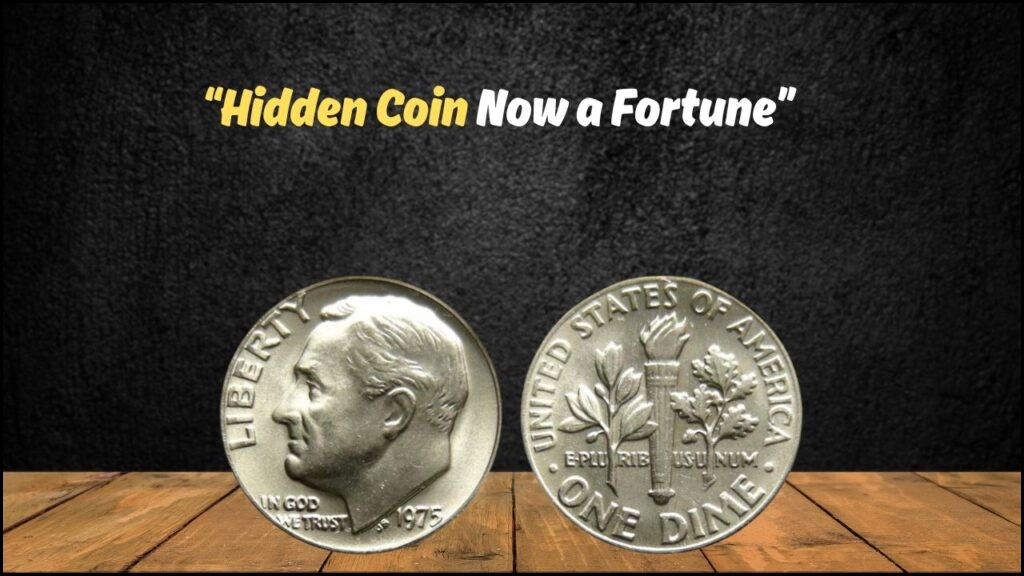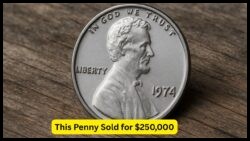1975 No‑Mint‑Mark Quarter – The world of rare coin collection is once again buzzing with excitement, and this time, it’s due to an extraordinary discovery — a 1975 no-mint-mark quarter that is being valued at an eye-popping $15,000 in current auctions. This unassuming piece of currency, once used in vending machines and parking meters, has suddenly become one of the hottest collectibles in numismatic circles. So what makes this specific quarter so special, and why are collectors willing to pay thousands for it? Let’s dig into the historical context, unique characteristics, and expert insights surrounding this rare 1975 no-mint-mark quarter that’s turning heads across the coin-collecting community.
What Makes the 1975 No-Mint-Mark Quarter So Valuable?
The value of a coin isn’t just based on age—it hinges on a combination of rarity, condition, historical errors, and market demand. This 1975 no-mint-mark quarter checks all the boxes, making it a top-tier collectible item.
- No Mint Mark Error: Mint marks are typically stamped to show the origin of the coin (Philadelphia, Denver, or San Francisco). The absence of a mint mark from 1975 quarters is extremely rare.
- Pre-Bicentennial Issue: 1975 was the only year the U.S. Mint did not produce quarters dated “1975.” All quarters from that period were supposed to be dated 1776-1976 for the Bicentennial celebration.
- Proof Coin Confusion: Some suspect this rare coin may have originated from a proof set accidentally released into circulation.
- Limited Discovery: Only a handful of these no-mint-mark 1975 quarters have been found so far, driving up their scarcity.
Comparison Table: 1975 Quarter Types & Value Estimates
To understand the significance of this discovery, here’s a comparison between standard 1975 quarters and the rare no-mint-mark edition:
| Coin Type | Mint Mark | Estimated Value | Circulation Status | Notable Features |
|---|---|---|---|---|
| 1975 Regular Quarter | None (not issued) | N/A | Not Released for Public Use | No official 1975 quarter exists |
| 1976 Bicentennial Quarter | D, S, None | $0.25–$10 | Wide circulation | Dual date (1776-1976) design |
| 1975 No-Mint-Mark Quarter | None | Up to $15,000 | Extremely rare; few known | Error or proof misstrike |
How Was the 1975 No-Mint Quarter Discovered?
The coin was reportedly discovered during a coin roll hunt by an amateur collector who initially mistook it for a regular Bicentennial coin. On closer inspection, the quarter had a 1975 date but lacked any mint mark, which raised red flags. Upon submission to an independent grading service (PCGS or NGC), the coin was authenticated and deemed a legitimate U.S. Mint anomaly.
Key Factors Behind Authentication
- Die Inspection: Experts examined the die pattern to match it with existing minting methods.
- Metal Composition: Analysis confirmed it matched 1970s quarter standards.
- Microscopic Features: Absence of modern machining signs helped validate authenticity.
Historical Background of U.S. Quarters During 1975
During the mid-1970s, the U.S. was preparing for its Bicentennial celebration. As part of that, the U.S. Mint decided not to issue any quarters dated “1975.” Instead, they minted quarters labeled “1776–1976” across both years — 1975 and 1976.
Timeline Snapshot
| Year | Quarter Date Issued | Mint Marks Present | Notable Events |
|---|---|---|---|
| 1974 | 1974 | D, S, None | Last pre-bicentennial year |
| 1975 | 1776-1976 | D, S, None | Bicentennial quarters start |
| 1976 | 1776-1976 | D, S, None | Continuation of bicentennial issues |
This makes the existence of a “1975” quarter highly suspicious — and simultaneously, extremely valuable.
Expert Opinions on the $15,000 Price Tag
Renowned numismatists are weighing in on this new find, and the consensus is clear — this could be one of the rarest quarter errors ever recorded.
Why Experts Are Excited:
- “This is the first confirmed 1975-dated quarter not part of the bicentennial issue,” said a PCGS spokesperson.
- “It’s a once-in-a-decade type of discovery,” commented a collector from the American Numismatic Association.
- Experts believe this coin’s value may rise further if more collectors or museums express interest.
How to Check If You Have a Rare Quarter
This shocking discovery has sparked a wave of coin checking across the U.S. and beyond. If you’re curious whether you have one of these rare coins sitting in your change jar, here’s what to look for:
Self-Checklist for Rare Quarter Discovery
- Check the Date: Look for a clear “1975” imprint — it should NOT read “1776-1976.”
- Inspect the Mint Mark Area: Look below “In God We Trust” on the obverse. No letter = potential error.
- Examine the Edges: Confirm the reeded (ridged) edges are intact and not tampered with.
- Compare with Standard Quarters: Match against regular Bicentennial coins for discrepancies.
- Seek Professional Grading: Submit the coin to PCGS or NGC for verification.
Future Value Potential: Should You Invest?
Many believe this coin’s value is just the beginning. Similar one-of-a-kind minting errors have shown exponential appreciation over decades.
Investment Outlook:
| Year | Estimated Value (Conservative) | Remarks |
|---|---|---|
| 2025 | $15,000 | Current market auction price |
| 2030 | $25,000 | If no additional coins are found |
| 2040 | $40,000+ | Museum demand may increase value |
Collectors who secure a verified 1975 no-mint-mark quarter could be holding onto a high-yield investment piece.
The 1975 no-mint-mark quarter isn’t just another coin — it’s a slice of American numismatic mystery that has defied expectations and historical logic. With values soaring as high as $15,000 and authenticity confirmed by top experts, it’s no surprise this discovery is stirring excitement across the world of rare coins. If you’re a casual collector or just curious about your pocket change, now might be the perfect time to start checking your quarters — who knows, you could be holding a small fortune.
FAQs of 1975 No‑Mint‑Mark Quarter
Q1. Is there an official 1975 quarter from the U.S. Mint?
A1. No, all quarters during 1975 were dated 1776–1976 for the Bicentennial.
Q2. Why does this coin not have a mint mark?
A2. It’s likely a minting error or a rare proof coin mistakenly released into circulation.
Q3. How can I authenticate a rare quarter like this?
A3. Submit your coin to a grading authority like PCGS or NGC for professional evaluation.
Q4. What is the highest price paid for this coin so far?
A4. The most recent listing values it at around $15,000 in verified auctions.
Q5. Can I find one of these in circulation today?
A5. It’s extremely rare but possible — coin roll hunting or inherited coin collections are your best bets.






